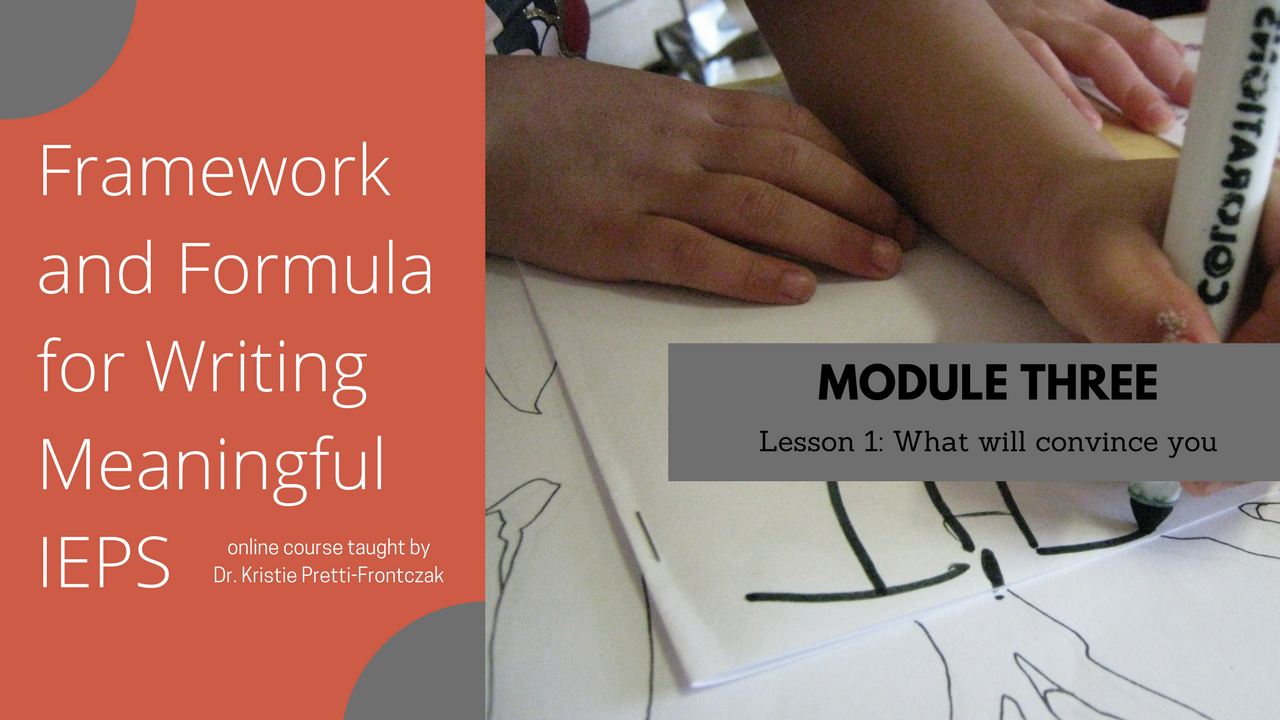Module 3: Selecting Criteria
Explore any lesson in any order!
Lesson 1: What will convince you
Determine how to write criteria for IEP goals to demonstrate a child's performance over time.
Lesson 2: What Can You Manage
Manage monitoring performance by clarifying how you will document and summarize data.

Lesson 3: What Matters
Strengthen how to determine what really matters and will help children thrive in school and in life
Module 3: Flipped Learning Activity
As you learn more about monitoring and managing the measurement of children's "progress" toward IEP goals, you are invited to consider how the words we use matter. In particular, you are invited to consider using the phrase performance monitoring instead of progress monitoring.
Performance is more in line with authentic assessment, while progress is more in line with standardized testing and/or accountability mandates. Further, when the word performance is used, we tend to see the following types of practices:
- Vertical and horizontal learning are seen as important (i.e., promotion of learning the next step in a sequence as well as a focus on generalizability and functionality)
- The diversity and variability of early development is acknowledge and valued
- Quantitative and qualitative data are considered useful in making data-driven instructional decisions
Interested in learning more? Read, "Performance Monitoring within a Tiered Instructional Model", a [chapter] from our text, "Assessing Young Children in Inclusive Settings: The Blended Practices Approach", which is shared with permission by Brookes Publishing and my co-authors.
BONUS handout for Module 3
• How to select appropriate criteria [pdf]
BONUS Blog for Module 3
• How a Recent Supreme Court Ruling Helps Unpack the Meaning of “Legally Defensible IEPs” [blog]
BONUS Audio for Module 3
• Riff on how many IEP goals a child's IEP should contain [audio]

